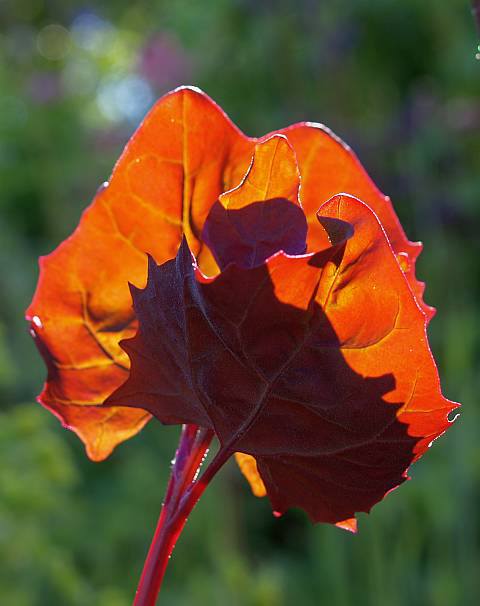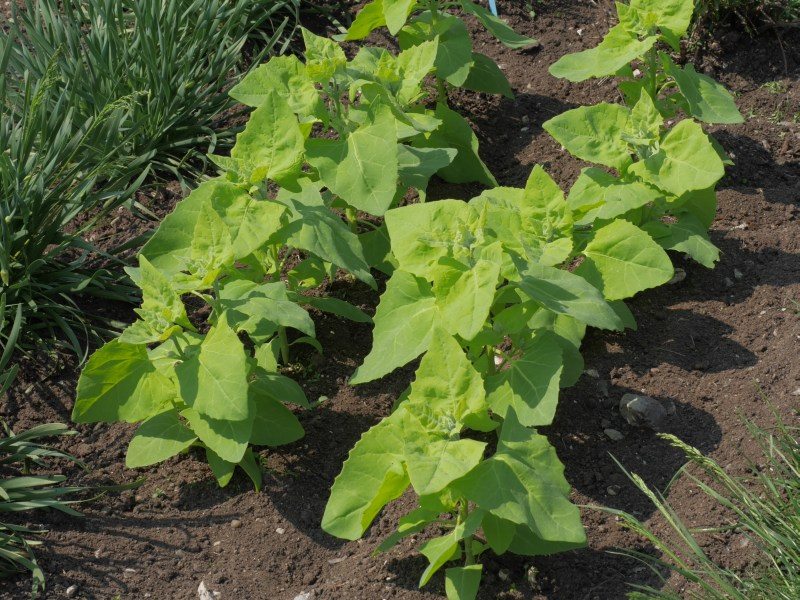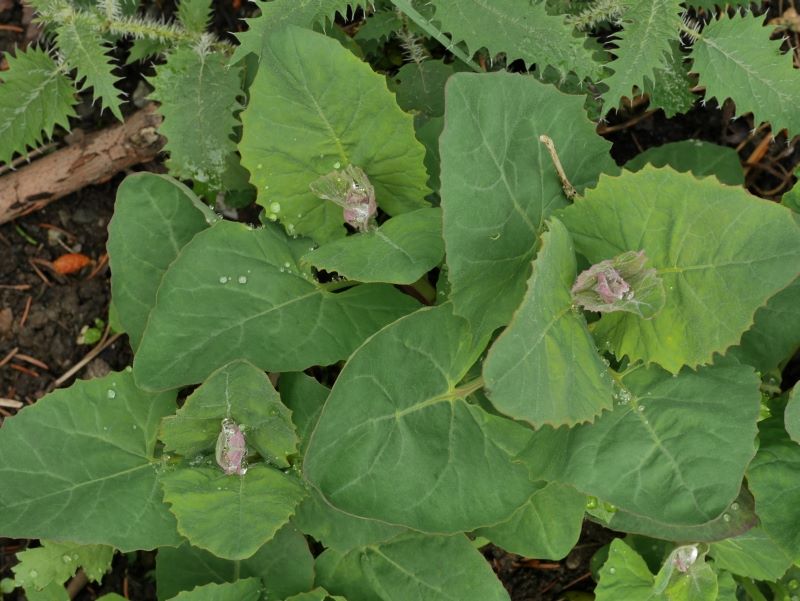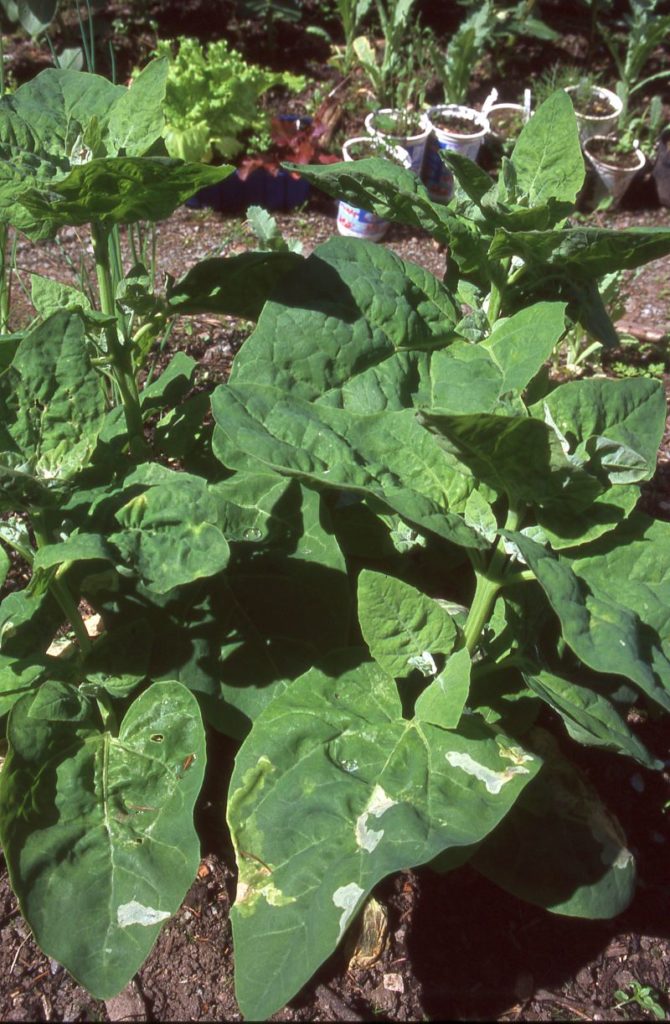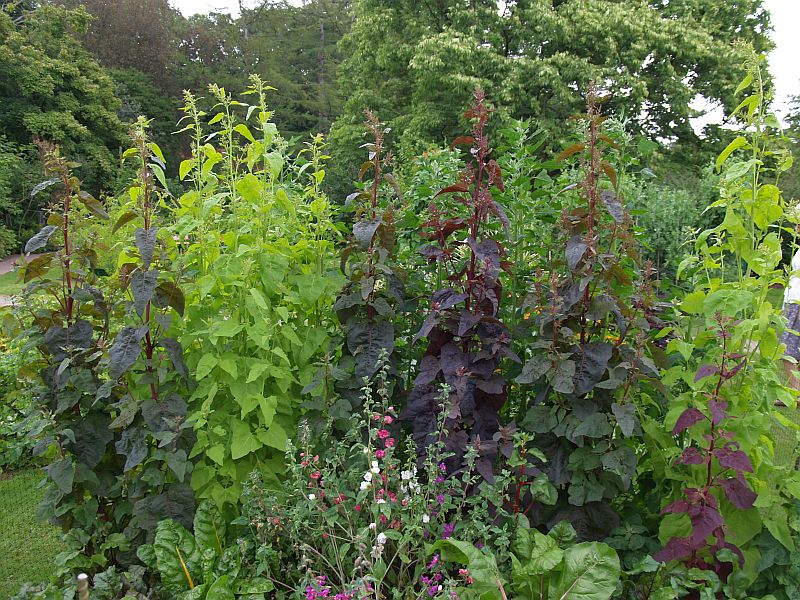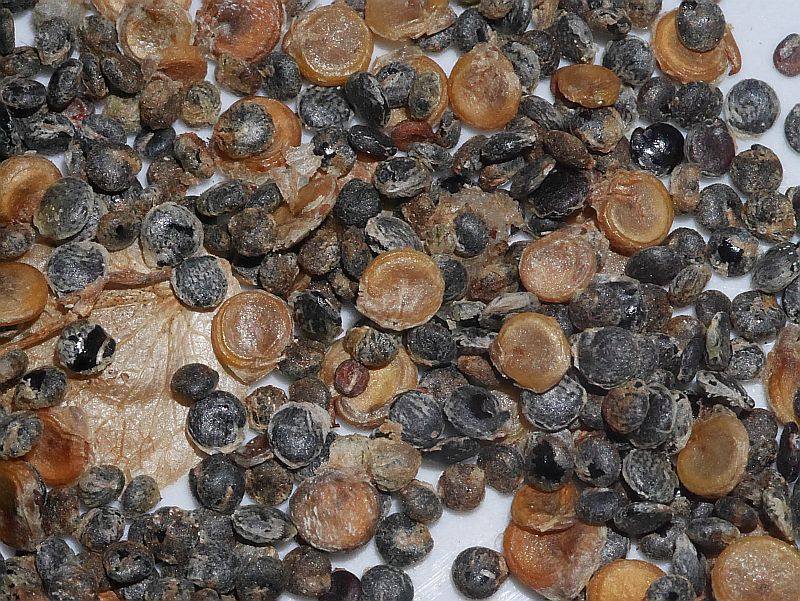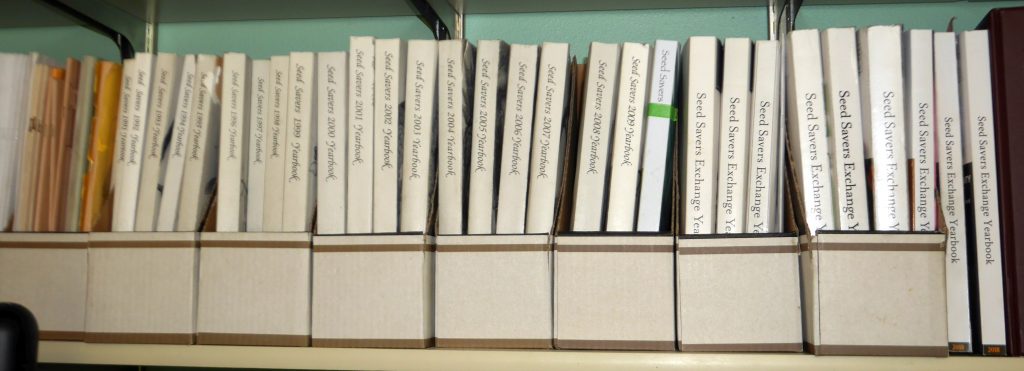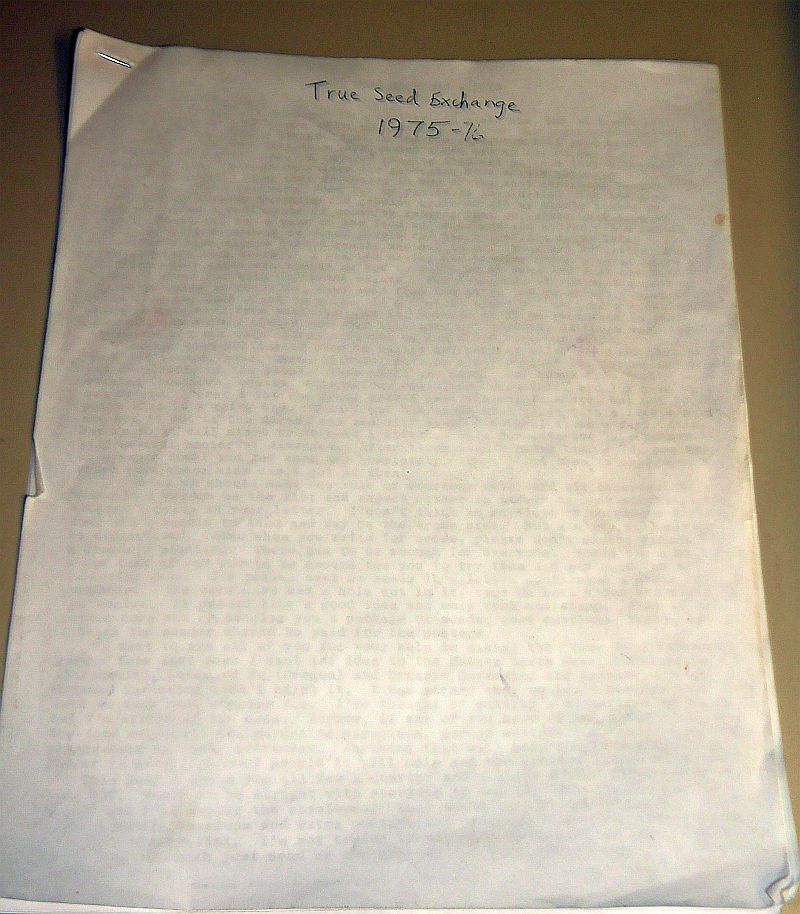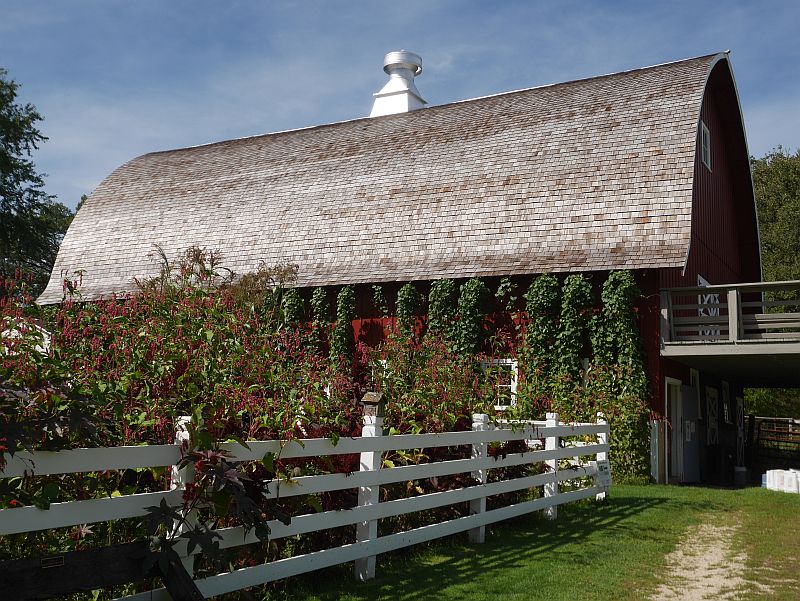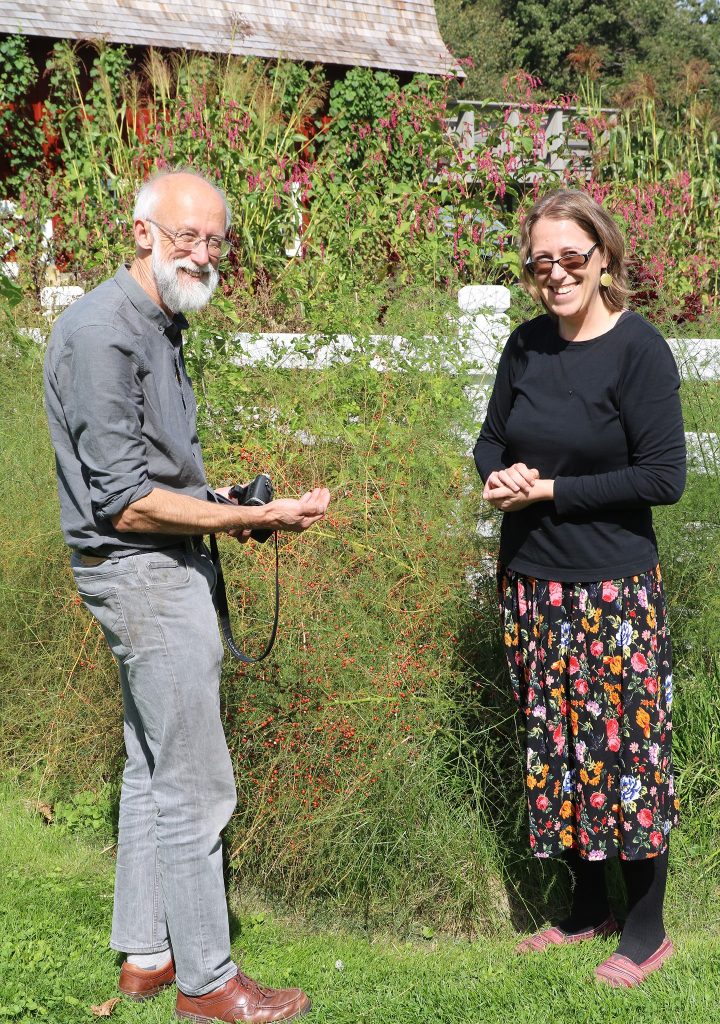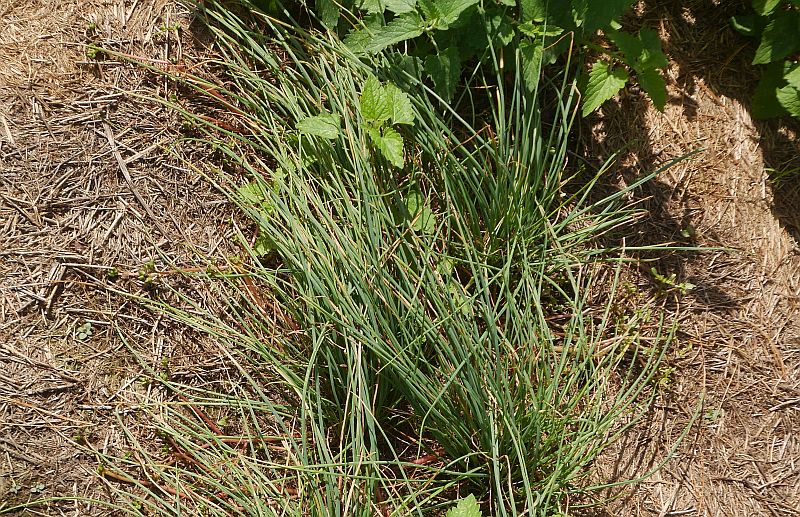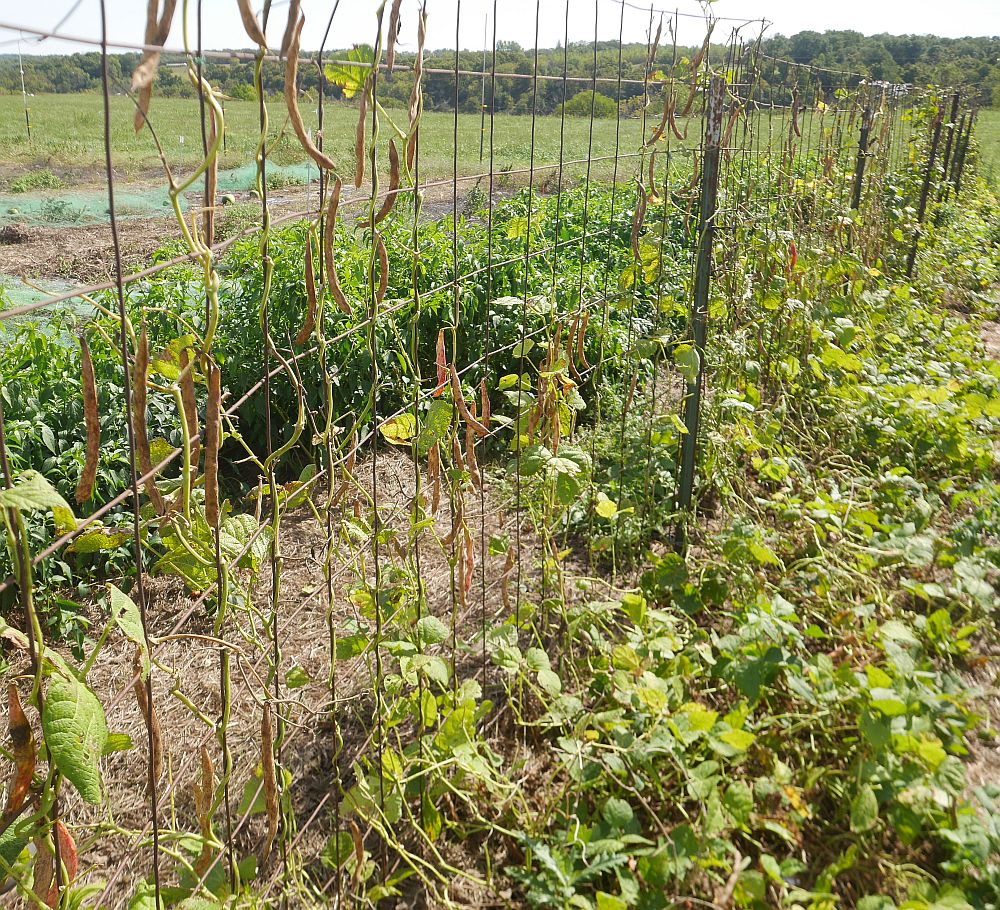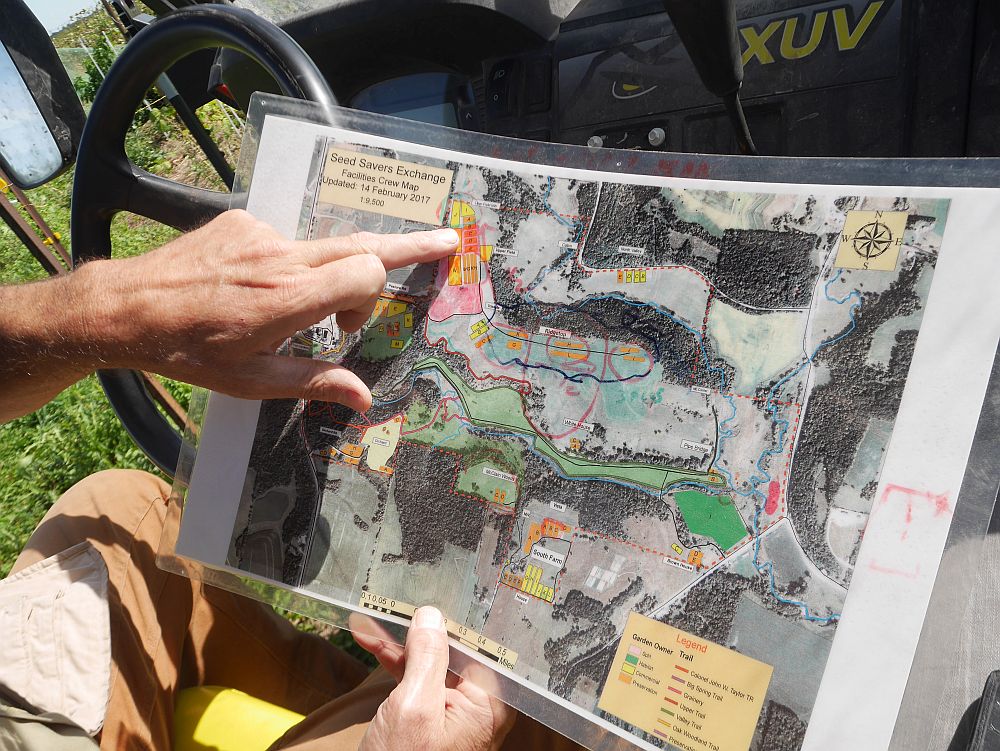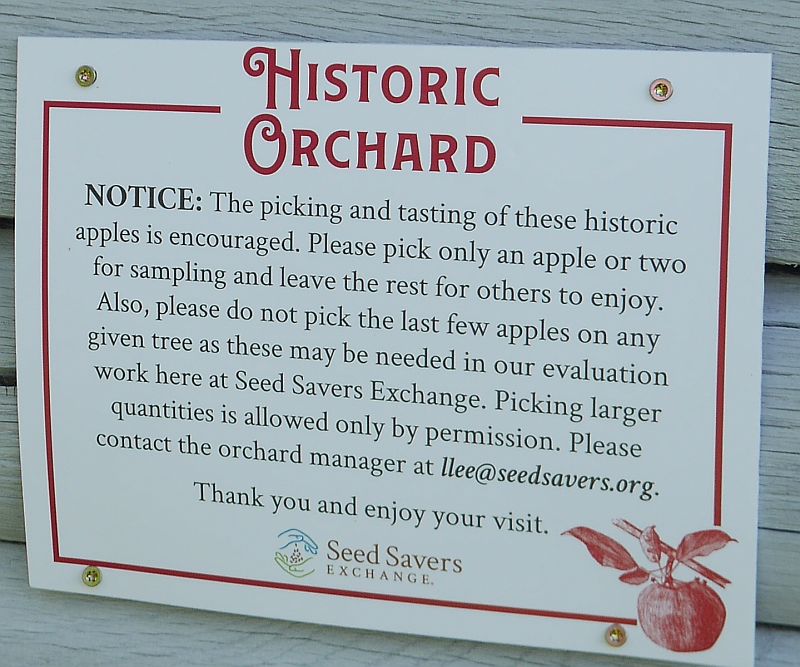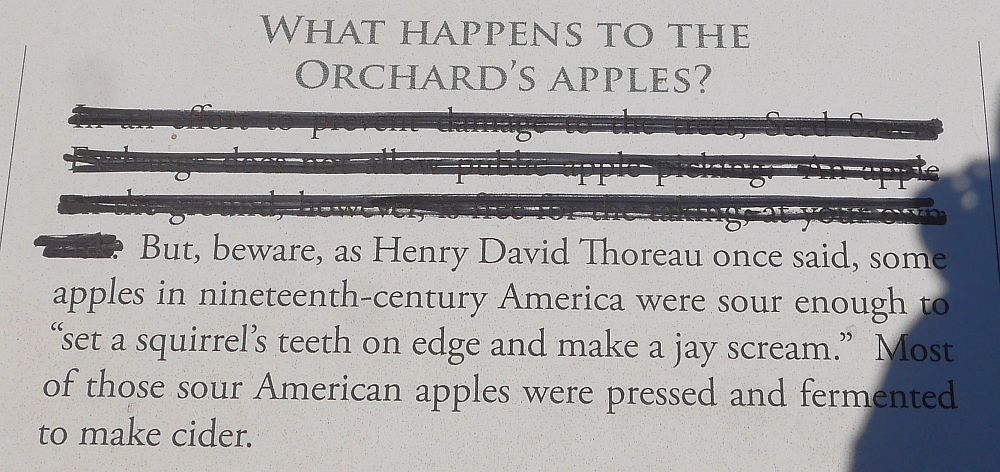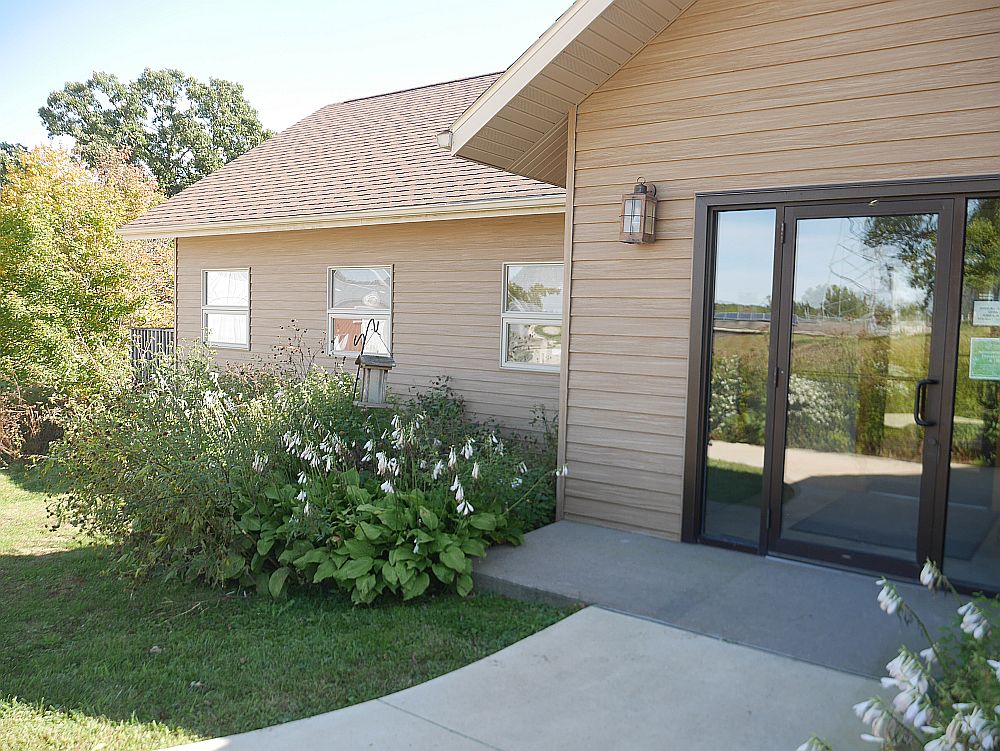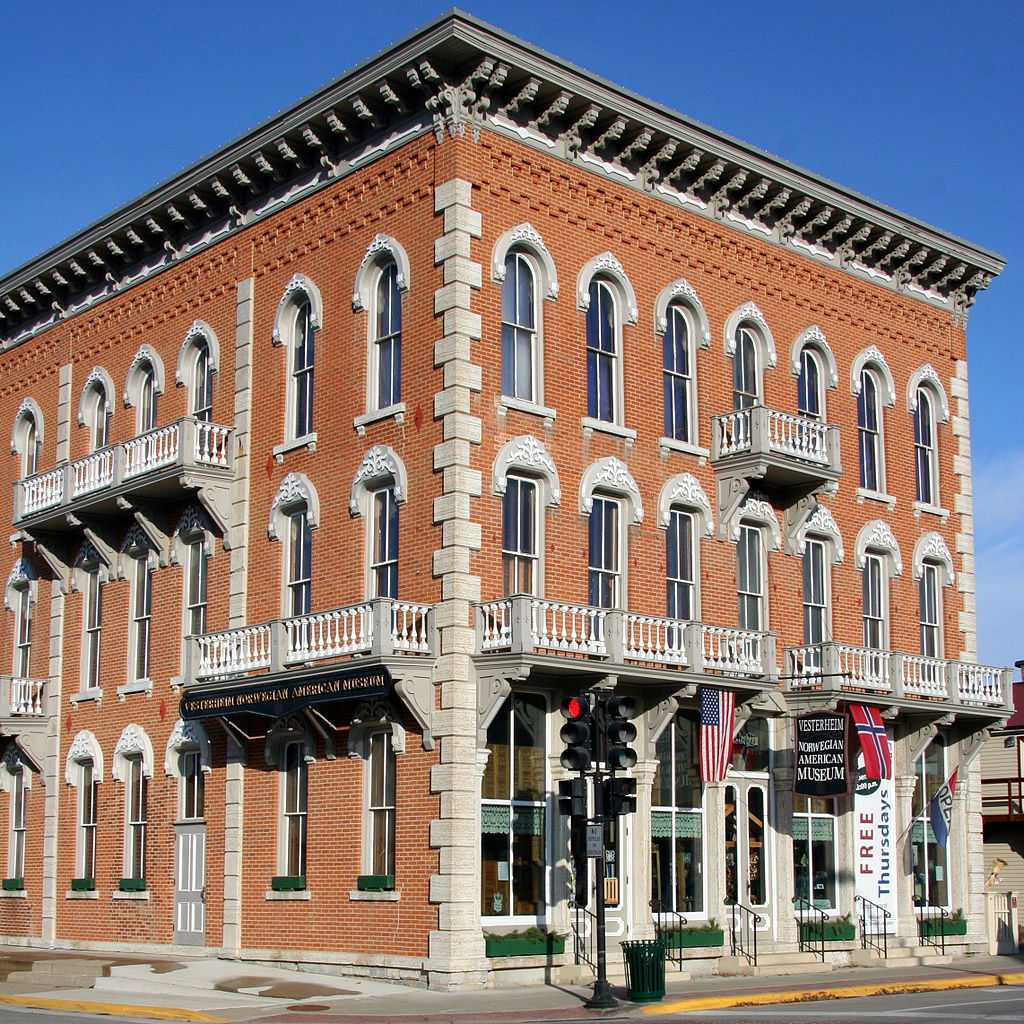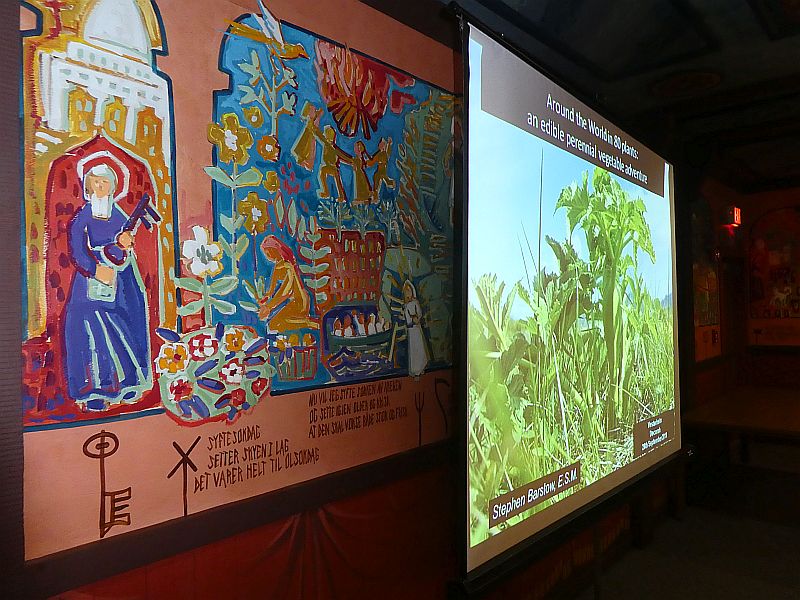The garden pea / ert (now Lathyrus oleraceus, was Pisum sativum) is an important source of vegetable protein and can be grown over most of Norway with many heirloom varieties which have been rescued and are maintained across Scandinavia by seed saver organisations such as our own KVANN (Norwegian Seed Savers; kvann.no).
Over the years, I’ve grown over 90 different varieties and usually some 20 varieties every year, a mix of Scandinavian and UK heirlooms and modern varieities. There are some favourite varieties such as Golden Sweet, Purple Podded, Salmon Flowered, Sugar Snap and Hurst Green Shaft which I grow each year, whilst others are grown less frequently on a roughly 3 year rotation, so that I am maintaining some 40-50 varieties at any one time! I share a few with members of KVANN each year.
The pea harvest and processing for 2023 was completed yesterday: dried first on window sills, then sorted, saving the best peas for seed for the next grow-out and for sharing. I use the remainder mainly for pea soup, pea fritters/felafel and for sprouting for pea shoots. Here’s this year’s pea diversity shown in the pictures:
Outer ring: Rättviksärt, Mammoth Melting, Big Jumps / Karina, Sugar Magnolia, PI203064 Finsk (gift, rematriated from Seed Savers Exchange), Jærert, Lollandske Rosiner, Herald/Herault, (Middle): Alma, Salmon Flowered, Purple Podded, Golden Sweet, Slikkert fra Våler, Store Holgers Kämpeart, Sugar Snap and Magnum Bonum (Not shown: Brunært fra Nakskov and Svartbjörsbyn).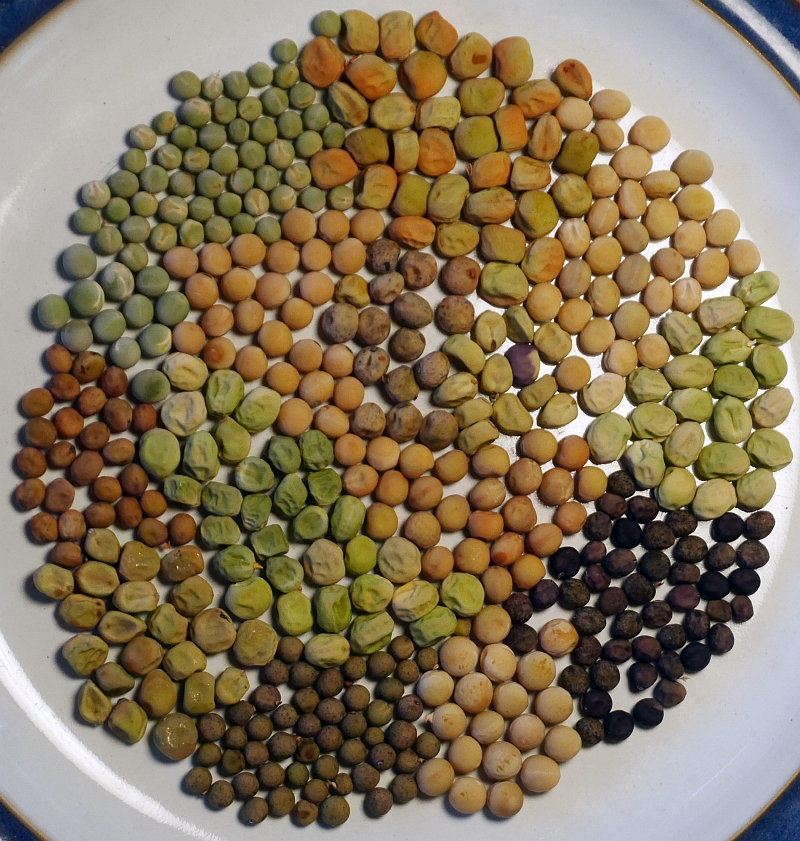

Tag Archives: Seed Savers Exchange
“Over the top” Flowery Whopper Carrot Salad
I was going to post an album of pictures showing off all the late flowers in the garden this record-breaking mild autumn still without any frost, but as they’re all edible I made a salad instead!
There were 33 different edible flowers (see the list below the pictures) plus 30-40 greens and a whopper carrot which I decided to keep whole as a feature! It was cut up when the salad was tossed afterwards. It has a story too as it is one of the Danish accessions rematriated from Seed Savers Exchange (SSE) in the US last winter. I took a few seed before sending the rest on to Danish Seed Savers (Dansk Frøsamlerne). It’s called Kämpe which means Giant in Swedish/Danish (I call it Whopper as it’s probably the biggest/thickest carrot I¨’ve grown here). It’s not a very old variety and SSE informed that it was a cultivated variety originally from the Swedish seed company Weibulls. Anyone know more about it?
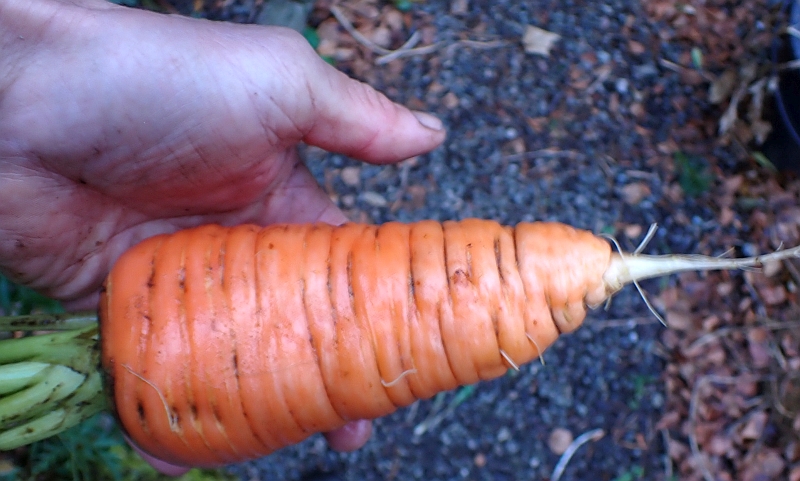




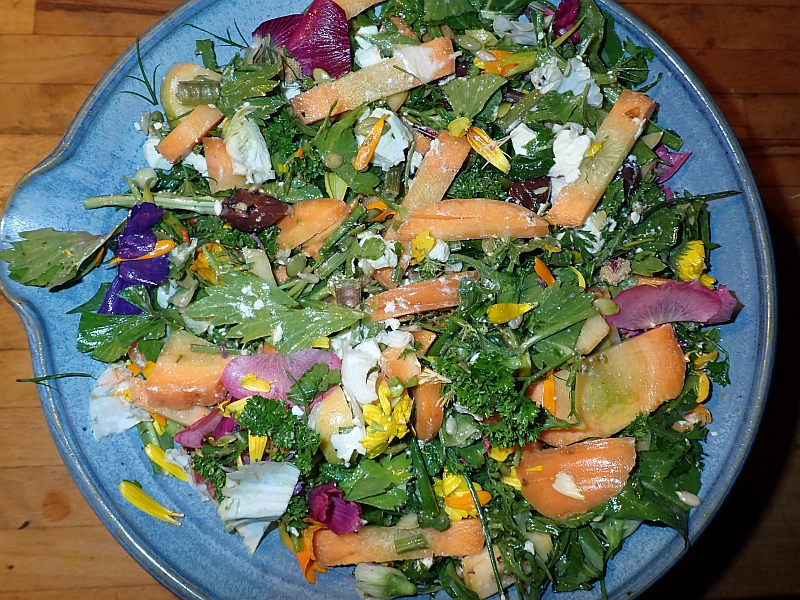
Salad flowers, all harvested from the garden
Salvia (blackcurrant sage / solbærsalvie)
Fuchsia magellanica
Hemerocallis “Stella de Oro”
Taraxacum spp. (dandelion / løvetann)
Rubus fruticosus (blackberry / bjørnebær)
Papaver somniferum (opium poppy / opium valmue)
Viola altaicum
Campanula persicifolia (peach-leaf bellflower / fagerklokke)
Sonchus oleraceus (common sow-thistle / haredylle)
Glebionis coronaria (chopsuey greens / kronkrage) (3 varieties)
Daucus carota (carrot / gulrot) (unopened flower umbel)
Geranium sanguineum (bloody cranesbill / blodstorkenebb)
Brassica oleracea (kale / grønnkål)
Oenothera biennis (evening primrose / nattlys)
Begonia
Malva moschata (musk mallow / moskuskattost) (white and pink flowered)
Malva alcea (hollyhock mallow / rosekattost)
Monarda fistulosa (wild bergamot / rørhestemynte)
Monarda “Elsie Lavender”
Calendula officinalis (pot marigold / ringblomst (2 varieties)
Campanula trachelium (nettle-leaved bellflower / nesleklokke)
Calamintha nepeta (lesser calamint / liten kalamint)
Tropaeolum majus (nasturtium / vanlig blomkarse) (2 varieties)
Pisum sativum (garden pea / ert)
Origanum spp. (wild marjoram / bergmynte) (2 varieties)
Campanula lactiflora
Alcea rosea (hollyhock / stokkrose)
Tragopogon pratensis (Jack-go-to-bed-at-noon / geitskjegg)
Red Cheeks and Fingerprints
I harvested two of the more beautiful broad (fava) beans I’ve grown yesterday, both of which originate in Canada. Red Cheek and Fingerprint favas. The diversity of forms, colours and sizes in these beans doesn’t cease to amaze me! I will definitely be trying to maintain these forms within my grex of broad beans (selection for a wide diversity of different forms every year and all planted close together so that they will cross promiscuously)!
Read legendary Will Bonsall’s article on fava beans where he talks about the diversity of forms and his collection of 250 varieties he maintains for Seed Savers Exchange: https://www.mofga.org/resources/beans/favas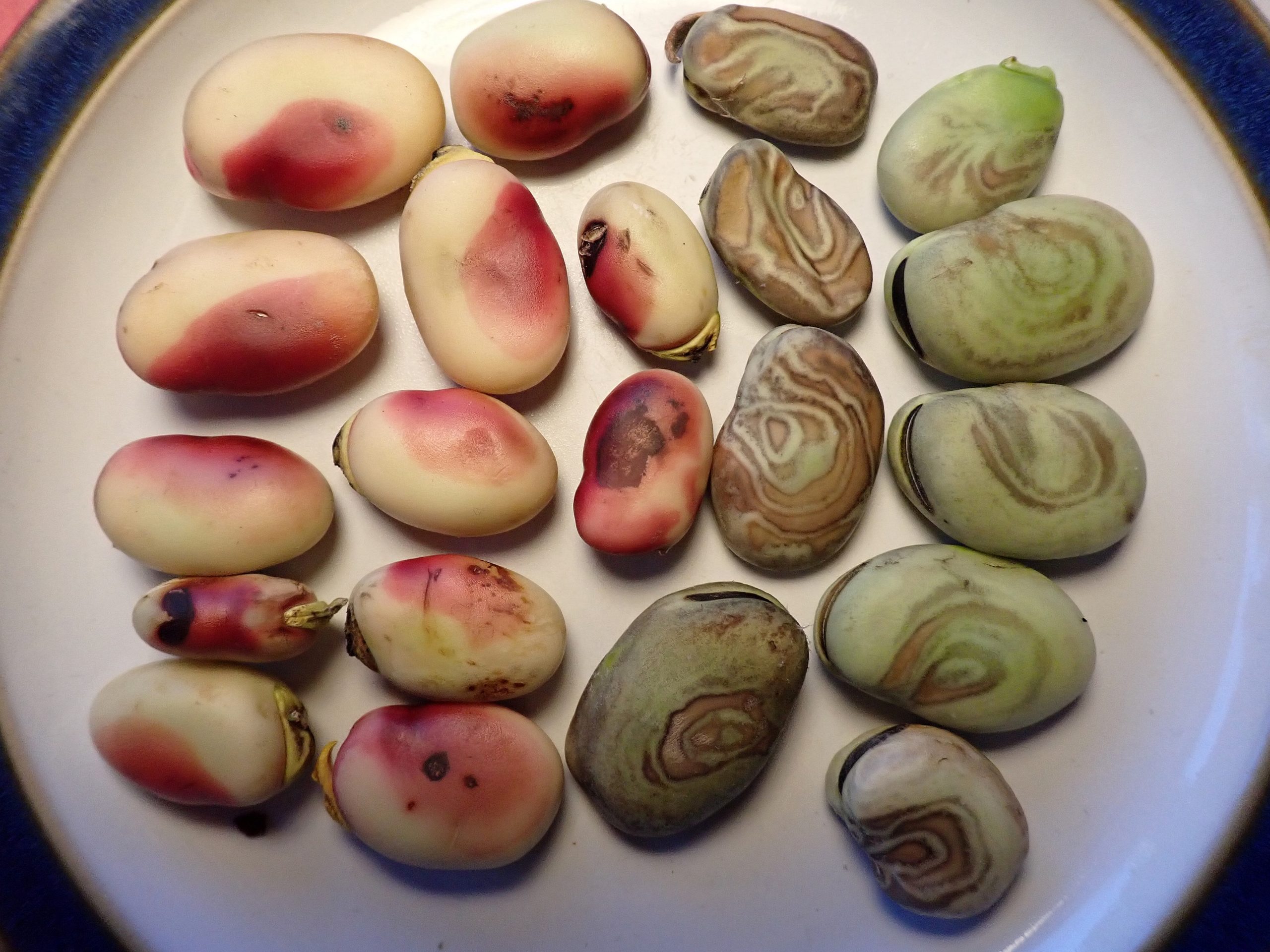

A diversity of garden orach
I’ve grown numerous forms of garden orach (Atriplex hortensis; hagemelde) over the years as they are useful and decorative (edimental) annuals for the summer garden. Even though they are grown quite close to each other they don’t see to cross much. My red form (var. rubra) has maintained its colour for over 20 years in one small patch. Other favourites include golden orach (var. aurea) and an heirloom from Seed Savers Exchange in the US “Marie Barnes”. My favourite though is the Norwegian heirloom “Backlund/Bly” with enormous green leaves. Sadly, the seed doesn’t mature often here and I’ve lost it. Although this plant originated in Norway, it no doubt modified to its new home in the Mid-West in the US where it was maintained for several generations in a Norwegian family. See the (Norwegian) story here:
http://www.edimentals.com/blog/wp-content/uploads/2018/07/3_Backlund-Bly_Hagemelde.pdf
There are also a number of green Danish heirlooms like “Lille Næstved Skole”
You can maybe spot red and golden orach as well as “Marie Barnes” in this salad ingredient picture (click on the plants in the picture for the names) https://www.adressa.no/pluss/magasin/article9858403.ece?rs6280711594805805236&t=1
I use them mainly in summer, both in mixed salads and cooked in numerous dishes, as there are plenty of other perennial greens available in early summer.
See the pictures below:
Visit to Seed Savers Exchange and the Vesterheim
I toured eastern and mid-west USA for 3 weeks in September / October 2019, on the back of being invited to the Mid-West Wild Harvest Festival in Wisconsin where I gave the keynote speech as well as a couple of classes. One of many highlights was a visit to Seed Savers Exchange (SSE) on September 26, just outside the small town of Decorah, IA, just an hour’s drive from the festival.
Decorah has become a centre of Norwegian-American culture. This originates from a large number of Norwegian settlements that started in the 1850s. Every July, Decorah also hosts the Nordic Fest, a celebration of Norwegian culture. Decorah is also home to the Vesterheim Norwegian-American Museum, the largest museum in the country devoted to a single immigrant group. Until 1972, one of the largest Norwegian-language newspapers in the nation was published there, the Decorah Posten. I have long been a member of the Seed Savers Exchange, which is KVANN’s biggest inspiration, an organization that started as early as 1975 to take care of heirloom plants. Since then, SSE has published a yearbook every year. In the SSE Yearbook you will find, in 2013, as many as 12500 varieties of vegetables on offer over 500 pages of small print. This is real diversity. SSE was founded by Diane Ott Whealy and Kent Whealy after Diane bequeathed the seeds of two heirloom plants that her great-grandfather had brought to the United States from Bavaria in 1870!
I rented a car from Madison and drove through a dull monotonous landscape of almost exclusively arable land with ripe corn and soyabeans. The contrast was therefore remarkable arriving at Heritage Farm, where Seed Savers Exchange is located, and where one can find perhaps the largest vegetable variety in the world? They grow here over 1000 varieties of seeds each year and at the same time conserve the nature of the wooded river valley conservation area. The farm was larger than I expected, at 390 ha, but it is necessary to be able to isolate the vegetables far enough apart to minimise the danger of crossing in seed production!
I was really made to feel welcome by the staff of the Seed Savers Exchange and especially by the brand new executive director, Emily Rose Haga, who has long experience in vegetable breeding, and especially tomato, pepper and lettuce varieties, at Johnny’s Selected Seeds in Maine since 2012.
In the morning I made a presentation to the staff of about KVANN and a little about my work with perennial vegetables which I talked more about in my evening talk (more below)!
Afterwards, I was given a tour of the facilities with Facilities Manager Jim Edrington who drove me around the farm to see the isolation areas for seed production, nature conservation areas, a collection of historic fruits and pastures with Ancient White Park Cattle (see http: //blog.seedsavers .com / blog / ancient-white park cattle-new-babies). Below is a picture gallery from my visit and at the bottom more about my evening talk in Decorah.
After visiting Seed Savers Exchange, I was given a tour of the Vesterheim Norwegian-American Museum in Decorah with the director before my lecture on perennial vegetables co-organized by the Seed Savers Exchange. What is missing from the museum is obviously a collection of Norwegian vegetables!
The lecture was in Vesterheim’s Gathering Room, where the administrative part is located, an amazing room decorated by Sigmund Årseth’s murals (see https://www.youtube.com/watch?v=lWNQe3NmDLY) and to my delight it was full of people from Seed Savers Exchange and other interested parties. I even met the founder of Seed Savers Diane Ott Whealy, a great honour (she gave me a copy of her book) and also David Cavagnaro, Heritage Farm’s first “farm manager” and known from the Pepperfield Project (see http://www.pepperfieldproject.org). Sadly I wasn’t aware who I was taking to at the time! Probably the most knowledgeable group I have had the privilege to give a lecture for!
2019 US East Coast Fall Speaking Tour
22nd September: Walk and talk with the great Joe Hollis at Mountain Gardens (near Asheville, North Carolina) (see https://www.mountaingardensherbs.com and https://www.facebook.com/MountainGardensHerbs); details not available yet!
24th September: Evening talk at the Atlanta Botanical Garden, Atlanta, Georgia; details not available yet!
26th September: Visit and talk at Seed Savers Exchange in Decorah, Iowa!
27th-29th September: Mid-West Wild Harvest Festival (Keynote plus two*3 hour talks /courses); https://www.facebook.com/groups/wildharvestfestival and https://www.wildharvestfestival.org/register.html
1st October: Talk organised by author of Perennial Vegetables and other great books, Eric Toensmeier in Holyoke, Western Massachusetts (details not available yet).
3rd October: Talk “Around the World in 80 Plants: New England to the Mediterranean” organised by Aaron Parker of https://www.facebook.com/pg/EdgewoodNursery in or around Portland, Maine (details not available yet). The talk continues with the rest of the world in Portsmouth the next day:
4th October (19-21): Talk “Around the World in 80 Plants: The Mediterranean to New England” at the Urban Forestry Center
Portsmouth, New Hampshire, USA (organised by Seacoast Permaculture, North Shore Permaculture Collaborative in collaboration with The Resilience Hub & Portland Maine Permaculture ) (FB: https://www.facebook.com/events/842574716098048; Tickets: https://tinyurl.com/y25tj8wq)
5th October: Looking for organisers for an evening event in the Boston area (possibly a walk and talk in the Arnold Arboretum)
6th October: Looking for organisers for a daytime event in the New York City area (possibly a walk and talk in the Brooklyn Botanical Garden or elsewhere)

